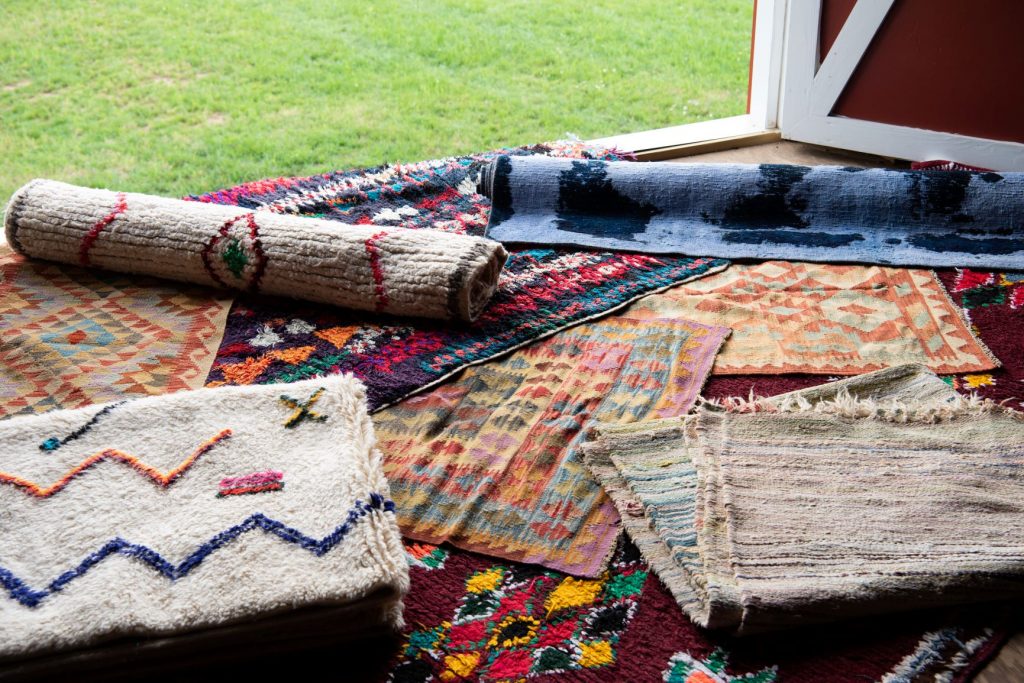If you want to add something to your house that will remain for years, a handcrafted antique rug is the way to go. These rugs are so durable that they are typically handed down through the family. The intricate workmanship in handmade rugs is the product of many hours of effort. No weaving machine can reproduce the skill that goes into manufacturing these rugs.
Handmade rugs are guaranteed the highest quality and endure for many more years than machine-made ones. However, it might be difficult to tell whether or not an antique rug was created by hand or machine.
Tips for Distinguishing Handmade Rugs from Those Made by Machines
The following are some indicators that may be used to differentiate rugs that have been crafted by hand from those that machines have manufactured:
- Rug's Fringe
Examining the rug's fringes is one way to determine whether or not it was handmade. The characteristics of the fringe may be used to determine whether or not the object was produced. In handmade rugs, the fringe is an essential component of the overall pattern; however, in rugs that seem to have had the fringe sewn on at a later date, the rug was most likely produced in a factory.
- Rug's Edge Finishing
The manner in which a rug's edges are completed may also be used as a second method for determining whether or not it was handmade or manufactured. Handmade rugs may be distinguished from those produced by machines by the lack of stitching, as opposed to machine-made rugs' use of finishing methods like binding and surging.
- Rug's Backsides
The fastest and most reliable technique to determine whether a rug was hand- or machine-made is to examine its back. The fact that the rug's back isn't perfectly flat indicates that it was handcrafted and that each knot was knotted by hand. Another clue is that the rug needed to be manufactured.
If the rug were of higher quality on the other side, it would have additional text. If you're in the market for a handmade rug, this becomes even more crucial since designs with more intricate details need more time and effort to weave. Rug buyers interested in long-term investment in a high-quality rug for their house will realize that handmade rug choices provide a broader selection of alternatives.
- Examine the Source Material
Wool, silk, cotton, fiber, and a variety of other natural materials are used in weaving authentic handmade rugs that originate in the Middle East or Asia. On the other hand, rugs that are produced by machines may be constructed from wool or synthetic fibers such as acrylic, polyester, nylon, and other similar materials.
- Inspect the Dye
Authentic Oriental and Persian carpets are dyed using vegetable dyes, which have been tried and tested over centuries and have been shown to be long-lasting. Examine the rug's dye to see whether or not it keeps its color if you are interested in determining whether or not the rug is genuine. A simple test involves placing a wet towel on the surface and leaving it there overnight. If the dye penetrates the cloth, it will not be permanent and susceptible to rubbing off or running if the fabric becomes wet.
- Longevity of Use
Handmade rugs are handcrafted with plenty of love and attention. The method is time-consuming and requires the rug maker to pay attention to detail. A skilled rug manufacturer will have spent many years learning their craft. Rugs made by hand are usually made from the finest, most durable natural materials. A hand-knotted rug will nearly always be superior quality and last longer than a machine-made one.
- Individuality and Distinction
Rugs produced by a machine may never be considered unique. Each one of these handcrafted rugs will be one-of-a-kind. Handmade rugs will always have their unique characteristics. You are highly suggested to go for handmade rugs for anybody wishing to enhance their house with a unique and beautiful piece of art. However, machine-made rugs are your best bet if you're looking for a flawless rug. Handmade rugs can never be 100% faultless since there is space for human mistakes.
- Look Up the Cost
Oriental and Persian rugs that are hand-knotted may sell for several thousand dollars or more. This is due to its extended lifetime, excellent quality, limited manufacturing volume, and exquisitely inventive design. Because machine-made rugs are so common and simple to produce, they tend to be readily accessible and sold at lower prices.
Conclusion
Both handmade rugs and machine-made rugs provide several desirable qualities in their finished products. Handmade rugs offer the distinct benefits of being one-of-a-kind, high quality, and having a longer lifespan than machine-made rugs. Ultimately, the decisions you make, how you live your life, and the amount of money you have will define the rug that is optimal for you.





Comments